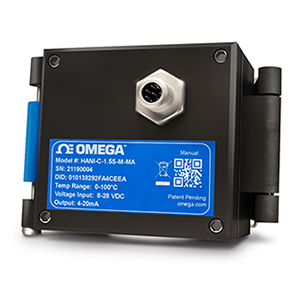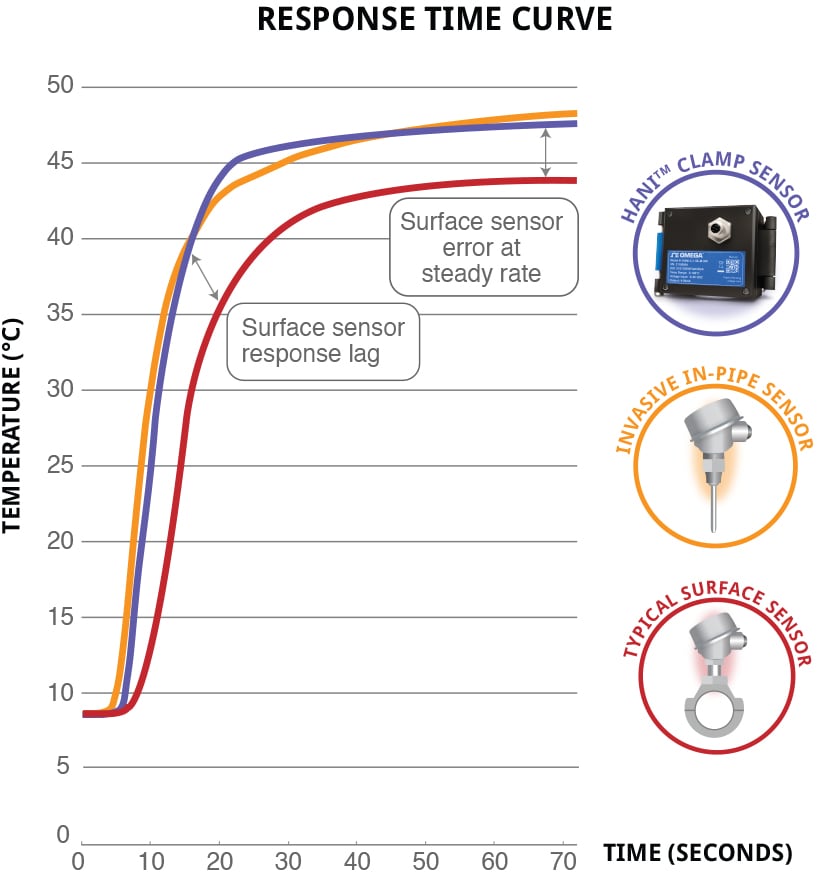Omega’s innovative clamp-on design makes sensor installation easy. Unlike invasive sensors, the HANI™ Clamp Sensor mounts to the outside of an sanitary metal pipe and measures the temperature of the process media inside the pipe.
High Accuracy & Fast Response Times
Performs like an invasive sensor.
Omega’s patent pending Hybrid Temperature Sensing platform uses multiple sensors and a proprietary algorithm to achieve the same accuracy and fast response times as state-of-the-art invasive sensors without the cost and risk.
• Accuracy for sanitary metal pipes: ±0.5℃
• Response time = 5 sec (t63) / 10 sec (t90)
Non-Invasive & Non-Contact Operation
No penetration, no risk of contamination
The HANI™ Clamp Sensor never comes into contact with the process media flowing through the pipe. There is no risk of buildup, sensor wear or breakage from high flow rates, corrosive/abrasive liquids, wake frequency and water hammer.
Ensure you select the right sensor for your system
Industrial and sanitary pipes have different outer and inner diameters, make sure you pick the correct sensor for your application. The HANI Clamp Sensor is factory set for stainless steel sanitary pipes. To adjust to a different type of metal please refer to the user’s manual.
Common Applications
New and retrofitting existing systems
Lower the total cost of ownership and reduce contamination risk without sacrificing performance by upgrading to a HANI™ Clamp Sensor.
Quality control & ad-hoc sensing
Clamp-on the sensor in seconds and connect to your laptop or PC for readings anytime - anywhere.
Verify existing invasive sensors
With accuracies comparable to most state-of-the-art invasive sensors, the HANI™ Clamp Sensor can easily be placed next to an invasive sensor to verify the accuracy or determine the drift of the invasive sensor.
 CLOSE
CLOSE






